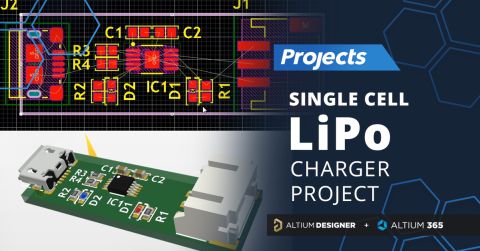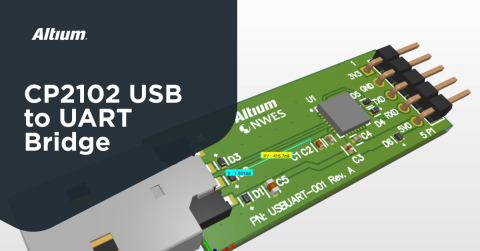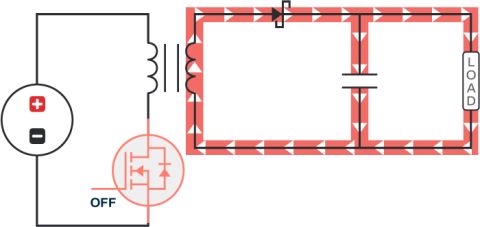
Temperature Sensors: Positive Temperature Coefficient (PTC) Thermistors

This is part 3 of our project to test every type of temperature sensor with all the standard implementations/topologies. If you want to add a temperature sensor to your project, this series has you covered with all the options covering the full range of precision and cost. At the end of the series we’ll be building a pair of host boards for all the sensor cards we have developed which will allow us to test, compare and contrast the different sensor types over a full range of temperatures and conditions. In this installment of the series, we’re diving into Positive Temperature Coefficient (PTC) Thermistor sensors.
In the introduction to this series, we built a project template for the analog temperature sensor boards, and another for the digital boards. You can find those templates and the sensor implementations for the PTC thermistors covered in this article on GitHub. As always, these projects are open source, released under the MIT license allowing you to use them with very little in the way of restrictions.
You can find a full range of PTC thermistors, and many tens of thousands of other components and sensors in my Celestial Altium Library, the largest open source library for Altium Designer®. You can also look at PTC thermistor sensors on Octopart if you want to see component stocks from distributors.
In this series, we’re going to be taking a look at a wide range of temperature sensors, talking about their advantages and disadvantages, and common implementations/topologies for their implementation. The series will be covering:
- Negative Temperature Coefficient (NTC) thermistors
- Positive Temperature Coefficient (PTC) thermistors
- Resistance Temperature Detectors (RTD)
- Analog Temperature Sensor ICs
- Digital Temperature Sensor ICs
- Thermocouples

Above is the PCB design you'll be reading about in the Altium 365 Viewer; a free way to connect with your co-workers, clients, and friends with the ability to view the design or download with the single click of a button! Upload your design in a matter of seconds and have an interactive way to take an in-depth look without any bulky software or computer power.
Positive Temperature Coefficient (PTC) Thermistors
As the name suggests, positive temperature coefficient thermistors, or PTC for short, have resistance that will increase as their temperature goes up - the exact opposite of the NTC thermistors from the previous article in this series. This can offer some very interesting applications; for example, PTC resettable fuses are related to PTC thermistors. While we are trying to limit the current through a device to reduce self-heating, a PTC fuse utilizes self-heating to limit current due to the increase in resistance as the temperature climbs.
NTC thermistors are by far the most popular in circuits in the wild. Most integrated circuits that have connections for a thermistor will only support an NTC thermistor, such as battery charger circuits. Furthermore, NTC thermistor resistances at 25 °C are significantly higher than those of the PTC variety. The most common NTC thermistors are 10k and 100k ohms, where PTC are 470 ohms and 1k ohms. Tolerances for PTC thermistor sensors can commonly be 50%, which will not provide an accurate temperature reading without accurate calibration. While the tolerance range is relatively large, most manufacturer data sheets show that the temperature response curve is typically consistent, meaning the device should only need initial calibration at a single known temperature.

There are several different types of PTC thermistor, as we can see in the family tree from TI above.
While PTC thermistors are not typically the first choice of temperature sensors due to their need for calibration and low resistance, they can be used in certain circuits. Where a PTC thermistor can be incredibly useful in your circuit is for applications where you want to have reduced current flow as temperature increases. This can be very practical for a board with LEDs that have current limiting resistors and will be exposed to a wide range of temperatures. By using a 470 Ohm or 1k Ohm PTC thermistor, perhaps in series with a normal resistor for fine-tuning the current flow, you can limit power to an LED. As the temperature of the board climbs, the LED will receive less power. In addition, the total current will decrease, so there will be less Joule heating during operation. This increasing restriction in current is essential because LEDs fail primarily from junction temperature. By reducing the current flow and heat dissipation in the LED at high temperatures, you can greatly extend the life expectancy of the LED. Alternatively, if you need to increase the current to some other element as the temperature increases, you would put the PTC thermistor in parallel.
For this project, I’m going to include two PTC thermistors. The first is the most stocked 0402 or 0603 packaged option from Digi-Key and has a tolerance of 50%. It’s not really intended for temperature sensing applications, but I thought it would be interesting to include as an example of a very low tolerance component. The second is a 0.5% tolerance 1k PTC thermistor, which is intended for temperature sensing applications.
|
Part |
PRF18BB471QB5RB |
PRF15AR102RB6RC |
|
Operating Temp Min |
-20 °C |
-40 °C |
|
Operating Temp Max |
+140 °C |
+160 °C |
|
Sensing Range |
Local |
Local |
|
Resistance at 25°C |
470 Ohms |
1k Ohms |
|
Tolerance |
50% |
0.5% |
|
Manufacturer |
Murata |
Murata |
|
Package |
0603 (1608 Metric) |
0402 (1005 Metric) |
PTC Implementation: Voltage Divider
The implementation for the voltage divider on the PTC thermistors is identical to the NTC implementation in the previous article in this series. The 470 Ohm thermistor has such a wide tolerance range that I don’t feel as though it’s worth adding another BOM line to give it a different value for the upper resistor than I’m using for the 1k Ohm thermistor.

Once again, if you were going to implement this in your own project, you’d look at the resistance graph for the PTC thermistor and choose an appropriate resistor to optimize your output voltage for the range you need to sense.
With the sensor project templates we created in the first installment of this series, creating the PCB is relatively trivial. The templates have 90% of the routing already completed, and we just need to position the two new components. With a little bit of work routing the new sensor, the evaluation card is ready to go.

The 1K PTC thermistor board is of course almost identical in appearance, but the thermistor comes in a 0402 package rather than 0603. If you wanted to evaluate any other 0402 or 0603 sized thermistor, you could take the project files for these boards from the GitHub repository and make your own boards with your own thermistor sensors.

PTC Implementation: Adding Voltage Follower
I’m using the more precise 0.5% tolerance 1K ohm PTC thermistor with the voltage follower as it’s designed for temperature sensing applications, and the 470 ohm option we are testing is intended for current limiting applications. The 470 ohm thermistor would not make a lot of sense to connect to a circuit that will provide a more accurate sensing result, as it’s tolerance is so large.
Just like the NTC thermistors from the previous article in this series, this will likely give you a more accurate reading, but the combined cost of a buffer amplifier and the sensor could buy you a nice analog sensor with a linear output and tight tolerance. This is more of a demonstration for gaining a more stable and accurate reading if you are forced to use a PTC thermistor in an external device and do not have the ability to choose a temperature sensor yourself.
Using a voltage follower can also give us a little extra precision depending on how the pin that is measuring the voltage is implemented. A microcontroller or dedicated ADC will typically have very high resistance to ground, but it will still act as a parallel resistor to our voltage divider. By adding a buffer/voltage follower operational amplifier to the circuit, we can isolate the microcontroller pin from the voltage divider.

The PCB for the voltage follower implementation follows the same theme of the other PTC thermistor boards. The thermistor is on the opposite side of the thermal break to the non-sensing components. By keeping only the sensing element inside the thermal break area, all our measurements will be consistent and not biased by other components nearby. I would not expect any of the other components to generate enough heat to influence the temperature reading you determine from the PTC thermistor. However, the goal here is to compare the sensors directly against other component types and topologies, so we’re going to keep them isolated from any other circuitry.

Other Options: Wheatstone Bridge
A Wheatstone bridge is a fantastic tool for measuring minute changes in resistance very accurately. Once way to do this is to place the sensor element in one of the legs of the bridge and calibrate the device such that the voltage across the output is zero. You could then determine the resistance change of a PTC thermistor by measuring the voltage across the output of the bridge. However, it is not worth our time to use an inherently inaccurate part component, such as a thermistor, as part of such a precision circuit because the other resistors required to calibrate the measurement circuit would be different from board to board. The engineering trade-off isn’t worth it - if you are forced to use a PTC thermistor as a sensor for measurement due to external requirements, the simple voltage divider method will allow you to measure the temperature accurately enough. If you can choose your own components for measuring temperature, you will achieve a higher quality result using a precision integrated circuit for temperature sensing. The precision integrated circuit will cost less than the parts needed for a Wheatstone bridge.
Test The PTC Thermistor Boards Yourself
These sensor test cards are open source, check out the repository on GitHub to download the designs and use them yourself. If you’re looking to evaluate some negative temperature coefficient thermistor sensors, the project files for these boards will save you time.
You’ll also find all the sensor cards we develop during this series in the same GitHub repository, so you might be able to get a sneak peek at what is coming up next in the series by checking the repository!
Would you like to find out more about how Altium can help you with your next PCB design? Talk to an expert at Altium.









